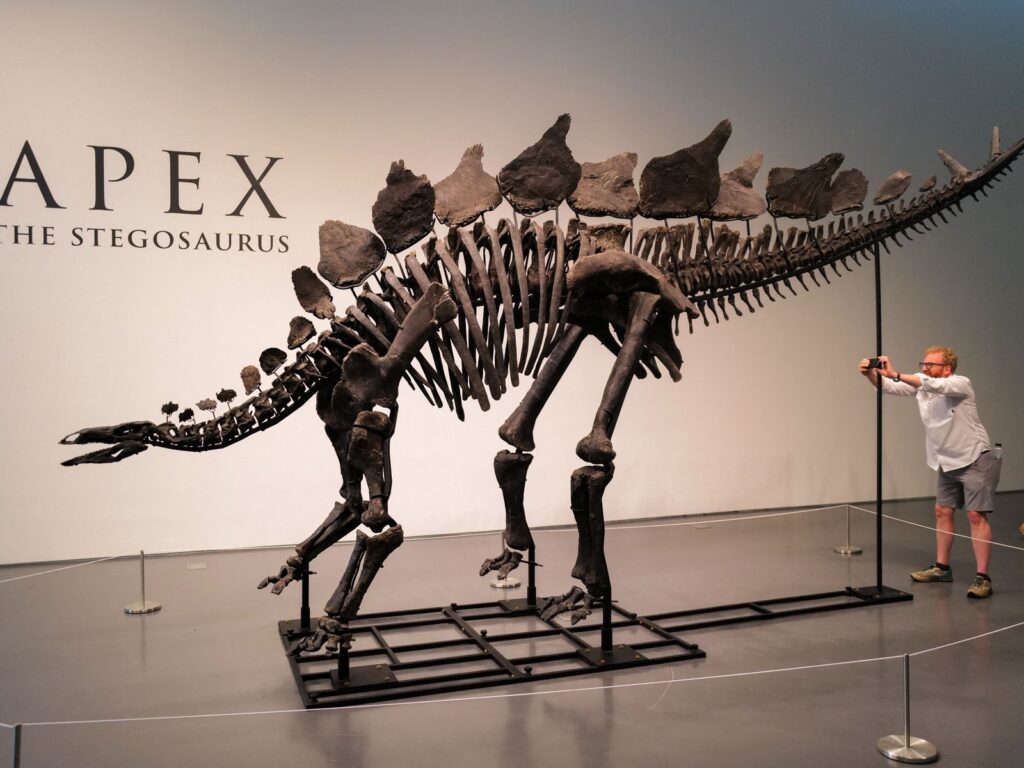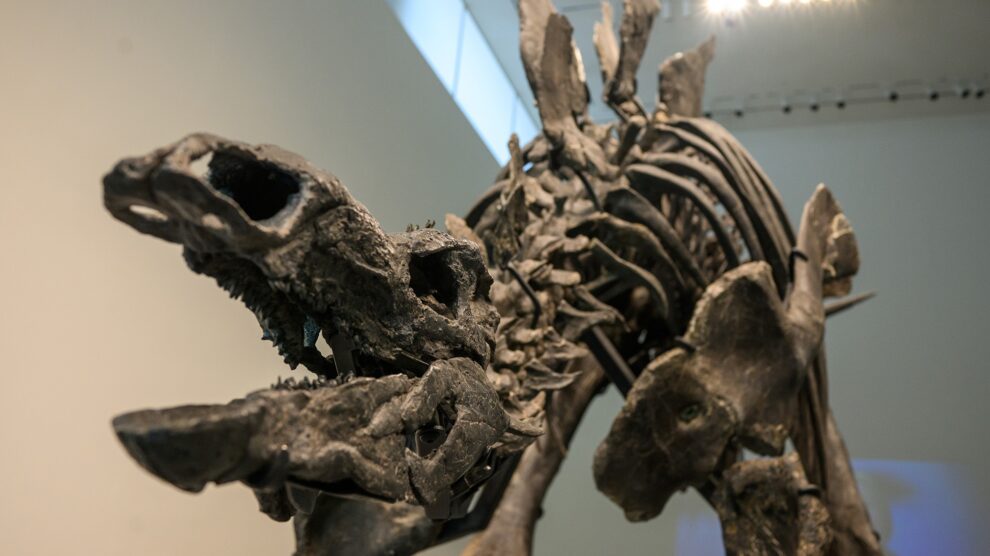
Breaking Records and Bank Accounts
The “Apex” stegosaurus didn’t just break records – it obliterated them:
- Final sale price: $44.6 million
- Pre-auction estimates: $4 million to $6 million
- Previous record holder: “Stan” the T. Rex at $31.8 million (2020)
A Bidding War for the Ages
The auction itself was a spectacle of high-stakes drama:
- Seven determined bidders drove the price skyward
- Intense competition far exceeded initial expectations
- Highlights growing interest in premium fossil specimens
The Mystery Buyer with a Mission
While the buyer’s identity remains under wraps, we do know a few key details:
- An anonymous American collector
- Expressed desire to keep “Apex” within the United States
- Plans to potentially loan the skeleton to museums
Why “Apex” Commands Such a Premium
Several factors likely contributed to the stegosaurus’s astronomical price:
- Rarity: Complete stegosaurus skeletons are exceptionally uncommon
- Preservation: The quality and completeness of “Apex” may be exceptional
- Scientific value: Potential for new insights into stegosaurus anatomy and biology
- Cultural icon: Stegosaurus is one of the most recognizable dinosaurs
The Bigger Picture: Fossils as High-End Collectibles
This sale reflects broader trends in the fossil market:
- Growing interest from private collectors in owning prehistoric specimens
- Increasing prices for premium fossils across the board
- Potential concerns about important specimens entering private hands
Museums vs. Private Collectors: A Delicate Balance
The “Apex” sale raises important questions for the scientific community:
- How can museums compete with deep-pocketed private buyers?
- Will high-profile sales inspire more fossil hunting and preservation?
- How can we ensure important specimens remain accessible to researchers?
The Future of Fossil Collecting
As prices continue to climb, we might see changes in the fossil world:
- Increased security and insurance costs for valuable specimens
- More partnerships between private collectors and public institutions
- Potential for new regulations around fossil sales and exports
Join the Conversation
We’d love to hear your thoughts on this record-breaking sale:
- Do you think fossils like “Apex” should be in museums or private collections?
- How might such high prices impact paleontological research?
- If you had $44.6 million, would you spend it on a dinosaur skeleton?
Share your opinions in the comments below! Let’s discuss the intersection of science, collecting, and the market value of our prehistoric past.
As “Apex” settles into its new home, one thing is certain – the world of fossil collecting will never be the same. This stegosaurus has not only broken records but also sparked important conversations about the preservation and ownership of our planet’s ancient history. Here’s hoping that wherever “Apex” ends up, it continues to inspire wonder and further our understanding of the incredible creatures that once roamed the Earth.










Add Comment